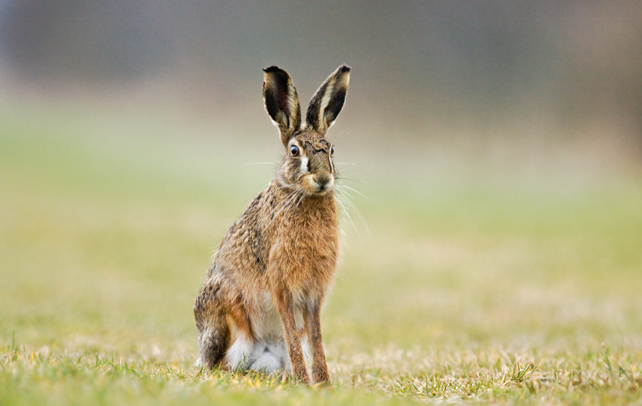Information About Hispid Hare

Hispid hares are among those shy and secretive mammals whose scientific study is partially complete. Once this rare specie was spread across north-eastern India, southern Nepal, and northern Bangladesh but now they are restricted to segregated pockets in the tall grasslands of southern Nepal and northern India. Unlike the other members of the Leporidae family, the hispid hare has shorter ears with its hind legs being relatively shorter, but exceeding the length of the forelegs. Nicknamed as bristly rabbit, their fur on the upper part is coarse with blackish-brown colour and pale brown on the chest with white belly. Human settlements, deforestation, and cultivation have significantly made an impact on restricting their habitat. In India, the hispid hare are found in Manas Park and Jaldapara wildlife sanctuary of West Bengal. Today, the largest breeding population of hispid hare is protected in the Royal Suklaphanta Wildlife Reserve of Nepal. Read on to know more about this enigmatic creature.
Fast Facts
Scientific Name: Caprolagus hispidus
Kingdom: Animalia
Phylum: Chordata
Class: Mammalia
Order: Lagomorpha
Family: Leporidae
Genus: Caprolagus
Species: C. hispidus
Height: 10 to 15 inches
Weight: Approximately 2.5 kg
Diet: Herbivorous, bark, shoots, grass roots and crops
Range: Manas National Park and Jaldapara Wildlife Sanctuary in West Bengal
Habitat: Tall grass-scrub savanna
Gestation Period: 25 to 50 days
Number of Offspring: 2 to 5
Interesting And Fun Facts About Hispid Hare
- The hispid hare lives in burrows which are usually not constructed by them; they instead occupy the burrows dug by other burrowing animals.
- Though hispid hare is not social, but it has been known to live in pair that usually comprises of a male and a female.
- They breed once or twice a year. The breeding of hispid hare’s off-springs takes place around January and February and it goes on till March.
- The female hispid hare gives birth to a litter of two or three off-springs (leverets) that are usually concealed and protected in clumps of grass.
- The hispid hares are also known as the bristly rabbits owing to the fact that they have coarse and dark brown fur.
- They are also called as the Assam rabbits.
- They have brown tail, which is 1 to 2¼ inches long. Their teeth and claws are large, straight, and strong.
- The behavioural pattern of hispid hare has not been exhaustively and scientifically documented yet.
- Although there is no exact information about the mating period of hispid hares but it has been reported that the ones caught in the months of January and March were pregnant.
- D. MacDonald has observed that male hares never provide any parental care while the females feed the young ones for about five minutes every day.
- Hispid hares have a very short life and they die soon in captivity too. During 1975, four or five hispid hares captured for the Guwahati zoo lost their lives during transportation.
- Communication patterns and methods of these hares are not much known but it has been assumed that they secrete scent from their glands under the groin area and in the chin for sexual communication.
- They are herbivores and feed on soft shoots and grass roots. They consume tree barks when grasses are sparse.
- The hispid hare are nocturnal creatures and venture out usually in the night, that is between dusk to dawn for food and rest during the day time.
- When caught, the hispid hare is so fearful of being caged, that it goes to the extent of hurting itself in a fanatical bid to escape captivity.
- In the wild, hispid hare can be spotted in the thatched areas of high grasses that are often referred to as elephant grass. This variety of grass also serves as a food source for the hare.
- The hispid hares were believed to be extinct in 1964, but in 1990 they were recorded in Assam, northwest Bengal, northwest Bihar, Madhya Pradesh, Uttar Pradesh, and the terai areas of southern and southwest Nepal.
- The hare species have almost reached the level of extinction with the burning of grasslands, forestry, and human settlements.









